Figure 1 below shows a metallic rod MN of length l= 80cm, kept in a uniform magnetic field of flux density B= 0.5T, on two parallel metallic rails P and Q. Calculate the emf that will be induced between its two ends, when it is moved towards right with a constant velocity v of 36km/hr
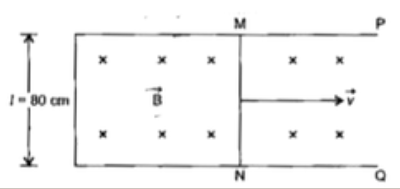
l=80cm, B= 0.5T
v= 36km/hr= 10 m/s
Induced emf: e= Bvl =0.5×10×80×10−2
e= 4V
Similar Questions
Two fixed long parallel horizontal rails, a distance 1 m apart are joined at one end by a resistance 1Ω. A rod AB of negligible resistance slides towards the resistance. A magnetic field of magnitude 4T perpendicular to the plane of rails exists. Find the current flowing (in Ampere) in the resistance, at an instant when the velocity of the rod is 2 m/s.

View SolutionA straight conductor 0.1 m long moves in a uniform magnetic field 0.1 T. The velocity of the conductor is 15ms−1 and is directed perpendicular to the field. The emf induced between the two ends of the conductor is
View SolutionA copper rod of length l is rotated about one end perpendicular to the uniform magnetic field B with constant angular velocity ω . The induced e.m.f. between its two ends is
View SolutionA 0.5m long metal rod PQ completes the circuit as shown in the figure. The area of the circuit is perpendicular to the magnetic field of flux density 0.15T. If the resistance of the total circuit is 3Ω calculate the force needed to move the rod in the direction as indicated with a constant speed of 2ms−1

View SolutionA metallic rod CD rests on a thick metallic wire PQRS with arms PQ and RS parallel to each other, at a distance l = 40 cm, as shown in following figure. A uniform magnetic field B = 0:1 T acts perpendicular to the plane of this paper, pointing inwards (i.e., away from the reader). The rod is now made to slide towards right, with a constant velocity of v=5.0ms−1.
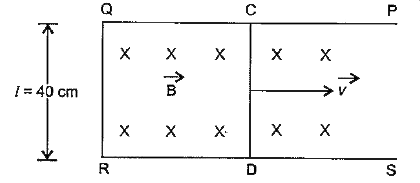
(i) How much emf is induced between the two ends of the rod CD ?
(ii) What is the direction in which the induced current flows ?
View SolutionA conducting rod of length l is rotating with constant angular velocity ω about point O in a uniform magnetic field B as shown in the figure . What is the emf induced between ends P and Q ?
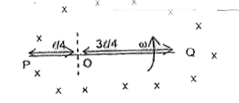
View SolutionA conducting rod of length 2l is rotating with constant angular speed w about its perpendicular bisector. A uniform magnetic field B exists parallel to the axis of rotation. The e.m.f. induced between two ends of the rod is
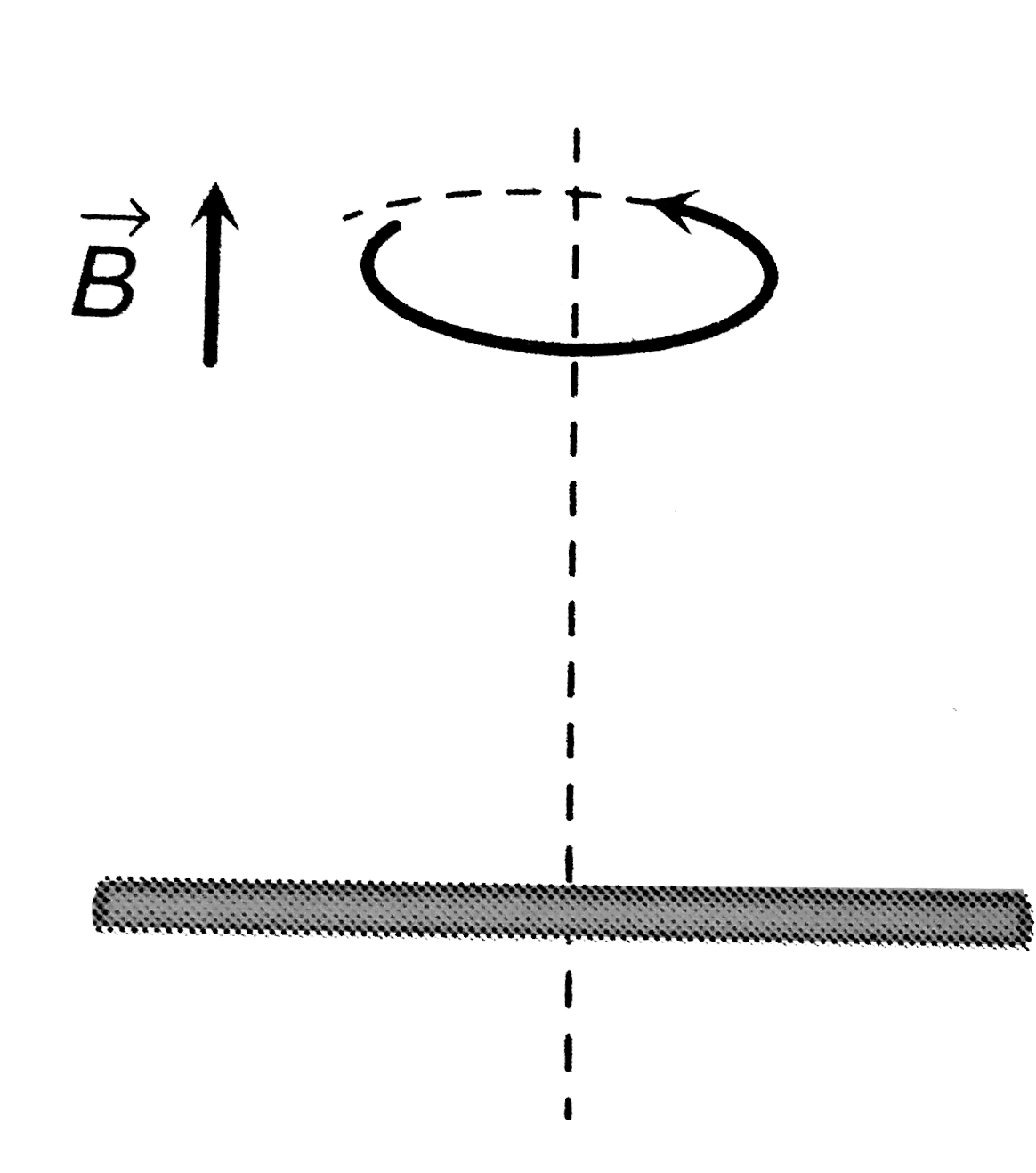
View SolutionA conducting rod of length 2l is rotating with constant angular speed w about its perpendicular bisector. A uniform magnetic field B exists parallel to the axis of rotation. The e.m.f. induced between two ends of the rod is

View SolutionA conducting rod AB of lemgth 2 l moves through a uniform magnetic field B. The rod makes an angle θ with the vertical while it falls with a uniform linear velocity v. The potential difference between the two ends of the rod is Bv2l .
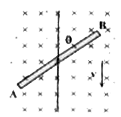
View SolutionA metal rod length l rotates about on end with a uniform angular velocity ω. A uniform magnetic field →B exists in the direction of the axis of rotation. Calculate the emf induced between the ends of the rod. Neglect the centripetal force acting on the free electrons as they moving in circular paths.
View Solution